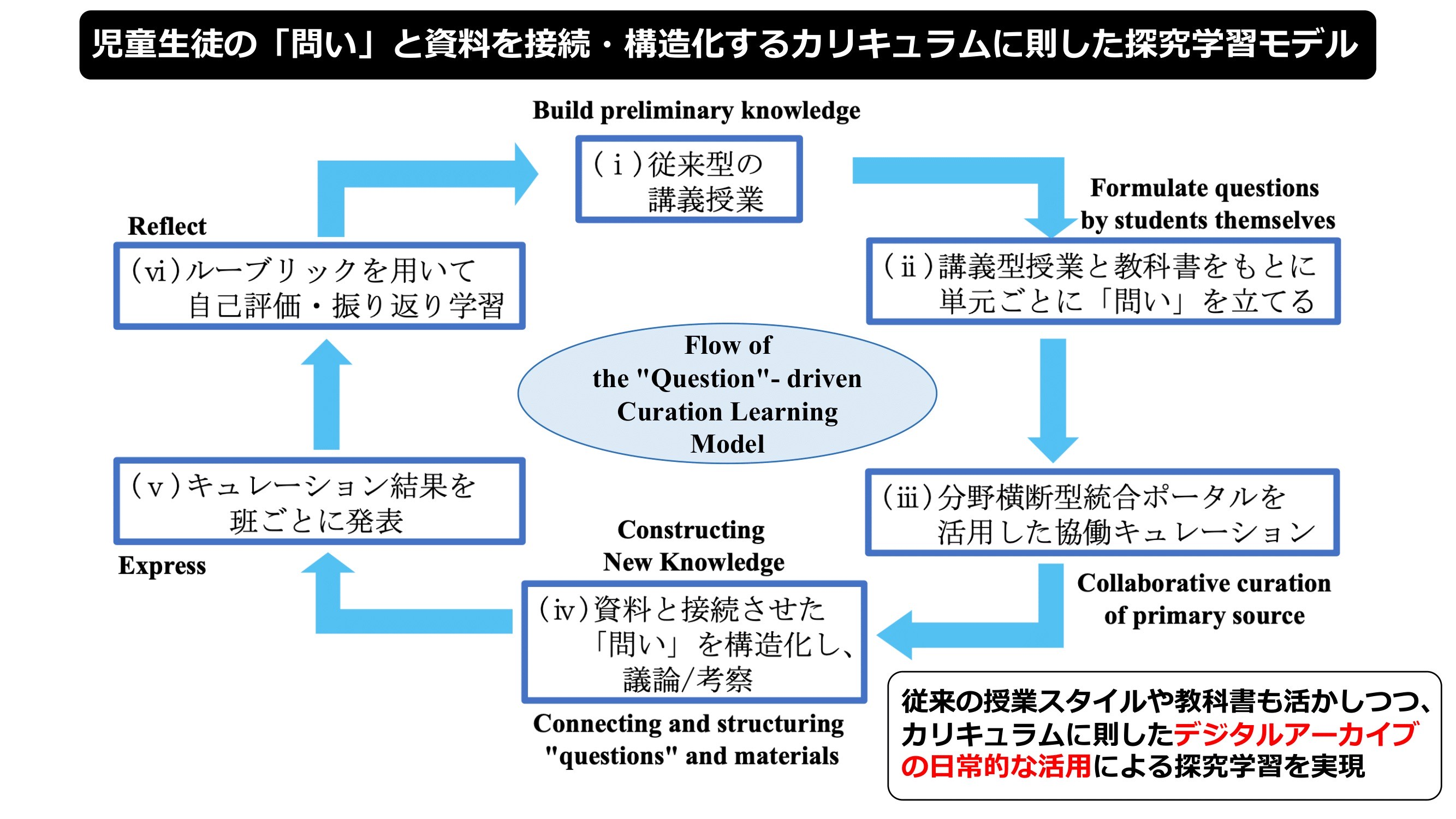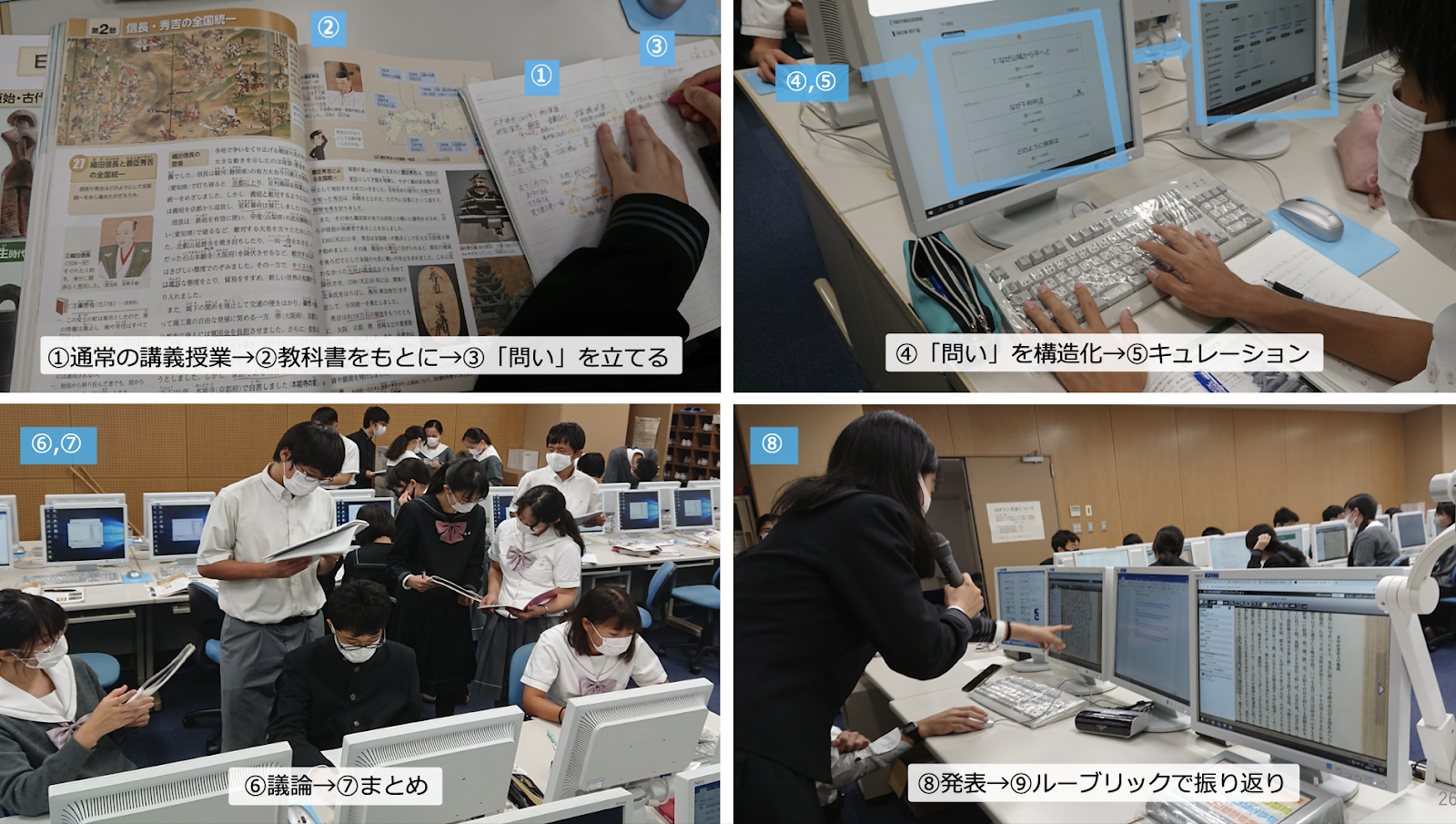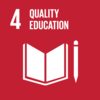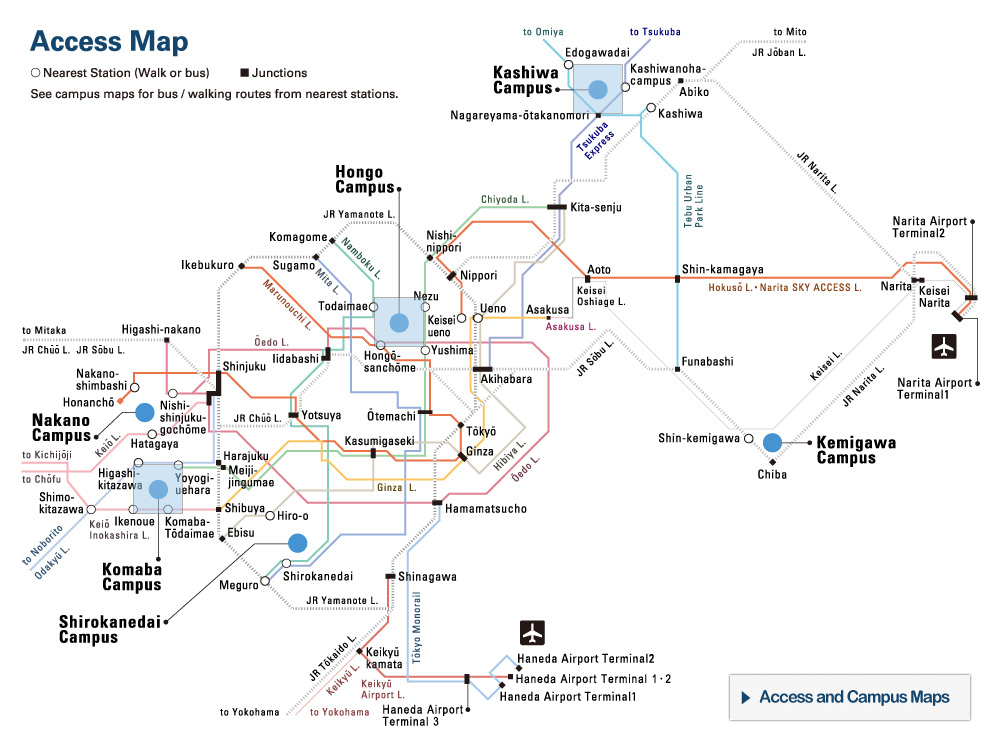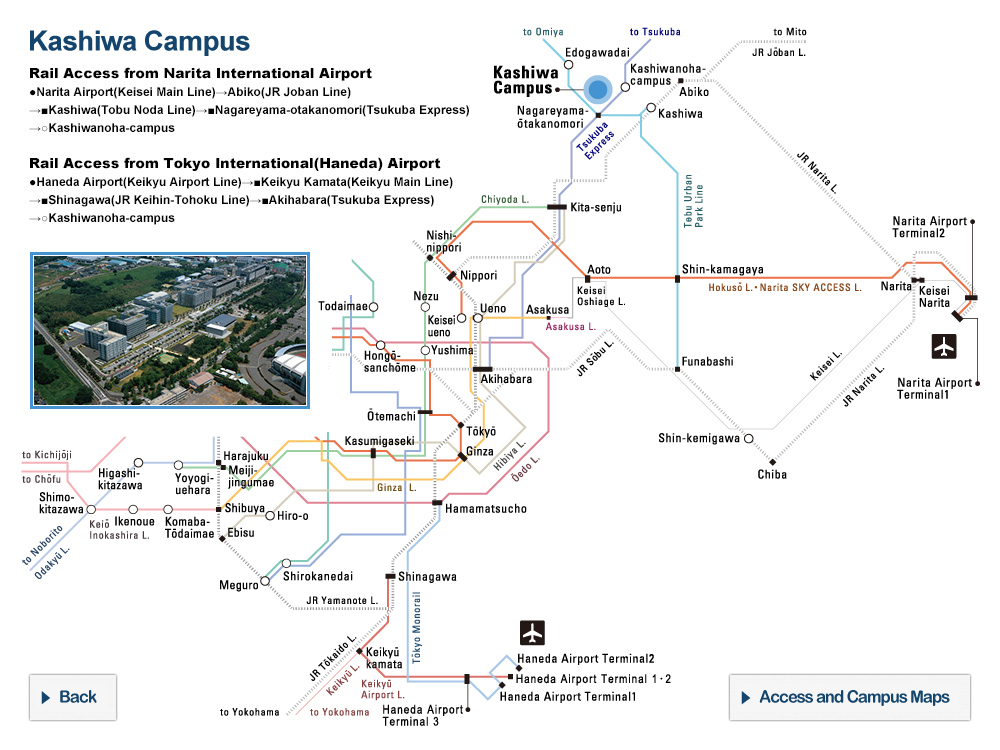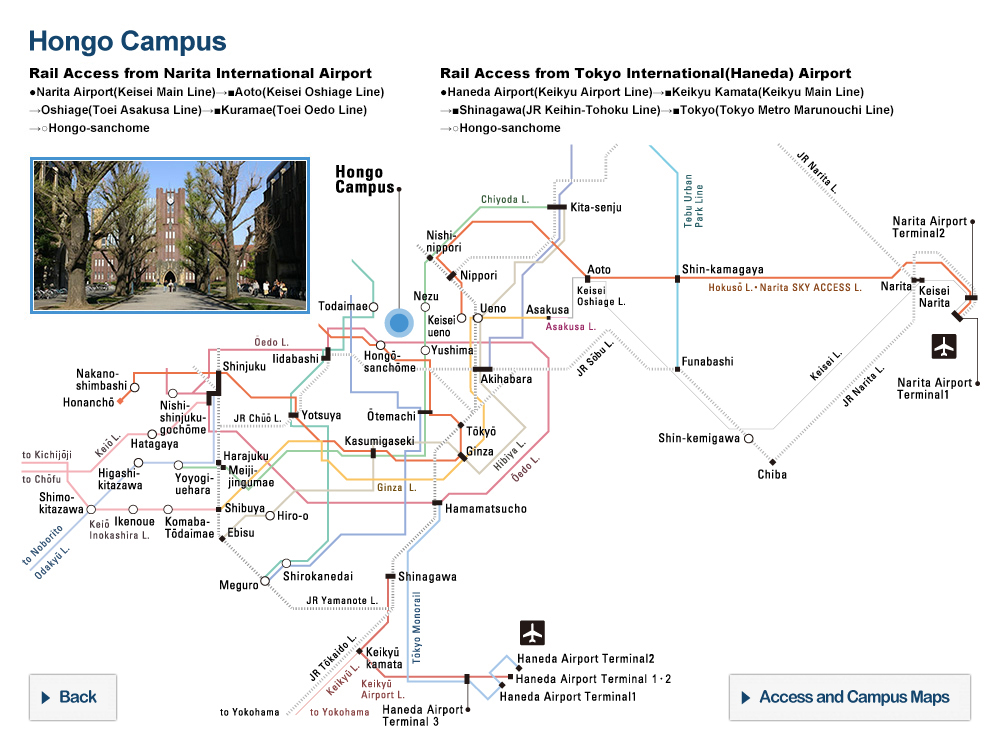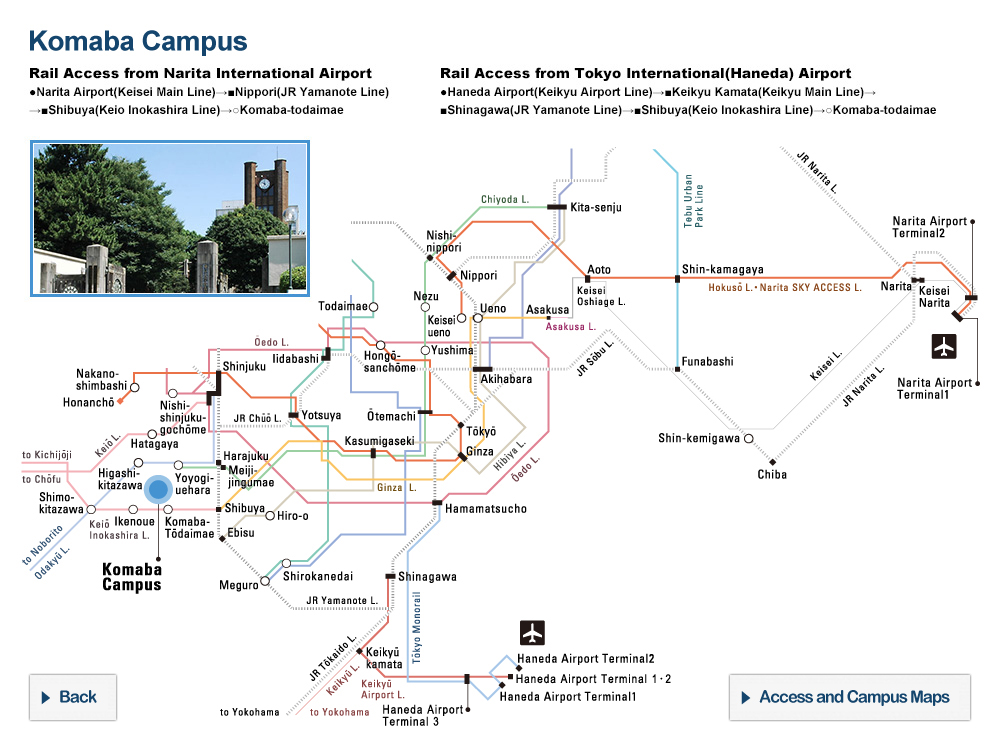Developing a curation learning model utilizing Japan Search


- 2.6 Market of Data (Data Trading, Data-driven Value Co-Creation)
- 2.12 Social Science (Digital Archive, Social Investigation, Sociology, Economics, Social Informatics)
- 2.14 Education (E-Learning, Educational Contents, Remote Education, Learning Management)
- 2.15 Humanities(Religion, Literature, Linguistics, History, Archeology, Cultural Anthropology, Geography, Area Studies, Tourism, Museology, Art, etc)
Hidenori Watanave
Interfaculty Initiative in Information Studies and Graduate School of Interdisciplinary Information Studies
Professor
The aim of this study is to connect and structure digitally archived materials and students' 'questions' in inquiry learning.
As a method to achieve this, a "curation learning" method was developed in which students deepen their learning through the collection of materials based on their own "questions". In this process, the national cross-disciplinary search platform "Japan Search", which enables cross-search of metadata from a variety of sources, was used to enhance the comprehensiveness of the learning materials, and to designing a "collaborative curation function" with the developers to support the connection and structuring of 'questions' and materials in collaborative learning, so that multiple users can curate while retaining the metadata.
As a result of the continuous practice in primary and junior high schools, it was shown that independent learning based on one's own 'question' was generated, and the ability to construct opinions based on materials collected in line with the 'question' was improved, and the connection and structuring of students' 'questions' in inquiry learning with a variety of digitally archived materials was promoted.
As a method to achieve this, a "curation learning" method was developed in which students deepen their learning through the collection of materials based on their own "questions". In this process, the national cross-disciplinary search platform "Japan Search", which enables cross-search of metadata from a variety of sources, was used to enhance the comprehensiveness of the learning materials, and to designing a "collaborative curation function" with the developers to support the connection and structuring of 'questions' and materials in collaborative learning, so that multiple users can curate while retaining the metadata.
As a result of the continuous practice in primary and junior high schools, it was shown that independent learning based on one's own 'question' was generated, and the ability to construct opinions based on materials collected in line with the 'question' was improved, and the connection and structuring of students' 'questions' in inquiry learning with a variety of digitally archived materials was promoted.
Related links
Research collaborators
SATOSHI MIYATA (Takehaya Elementary School attached to Tokyo Gakugei University (when practiced)) KENTO ONO (Tokyo Metropolitan Oizumi Junior High School)
Related publications
OI Masao, WATANAVE Hidenori. Zyapan sa-ti wo katuyoushita syoucyuukou deno kyure-syon zyugyou dezainn:dezitaru a-kaibu no kyouiku katuyouigi to kanousei
(Curation class design for elementary, middle and high schools utilizing Japan Search: Significance and potential of educational use of digital archives)
Journal of the Japan Society for Digital Archive, 2020, Vol.4, No.4, p.352-359. (In Japanese)
(Curation class design for elementary, middle and high schools utilizing Japan Search: Significance and potential of educational use of digital archives)
Journal of the Japan Society for Digital Archive, 2020, Vol.4, No.4, p.352-359. (In Japanese)
SDGs
Contact
- Email: hwtnv[at]iii.u-tokyo.ac.jp
※[at]=@


